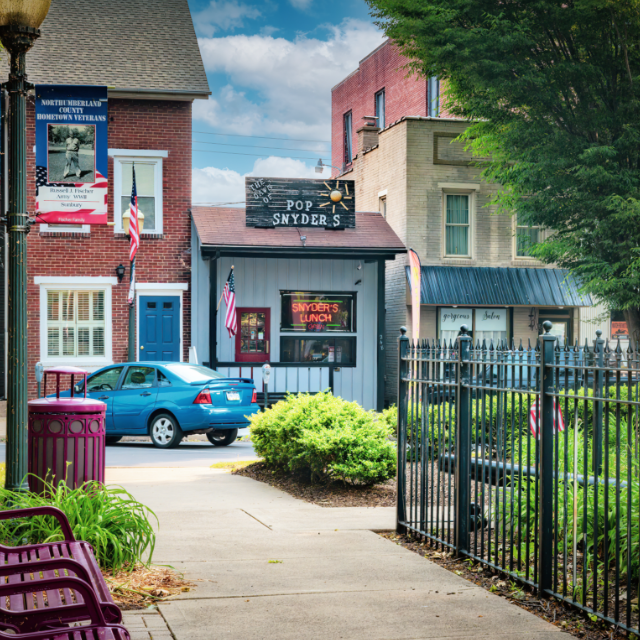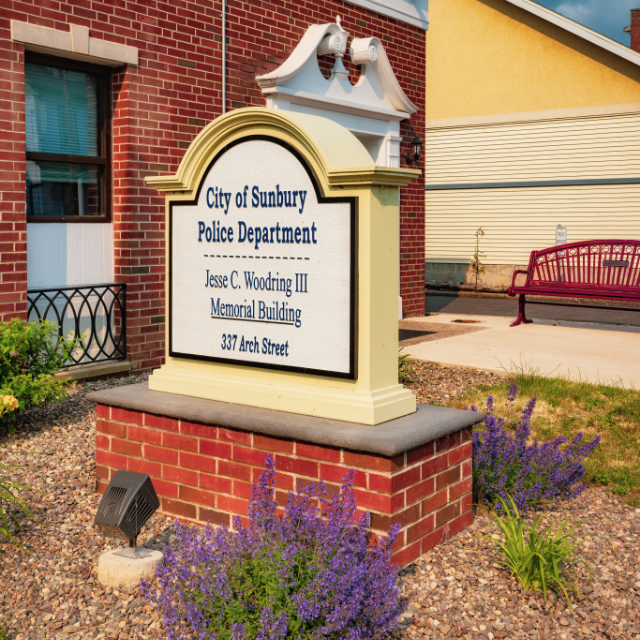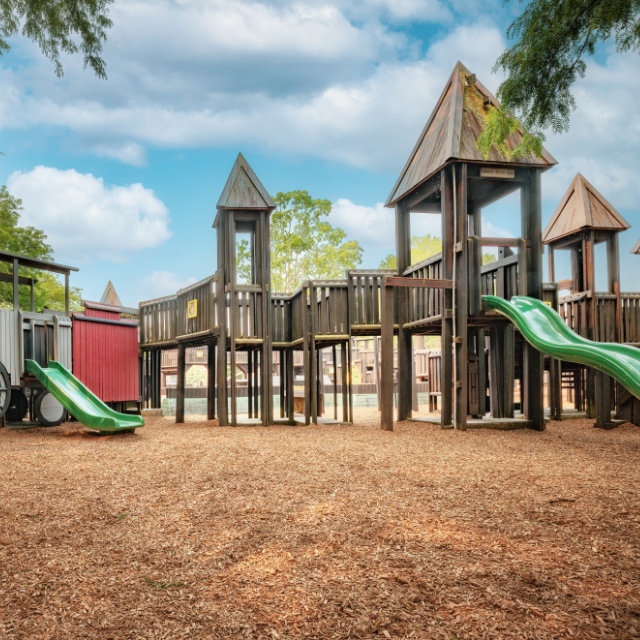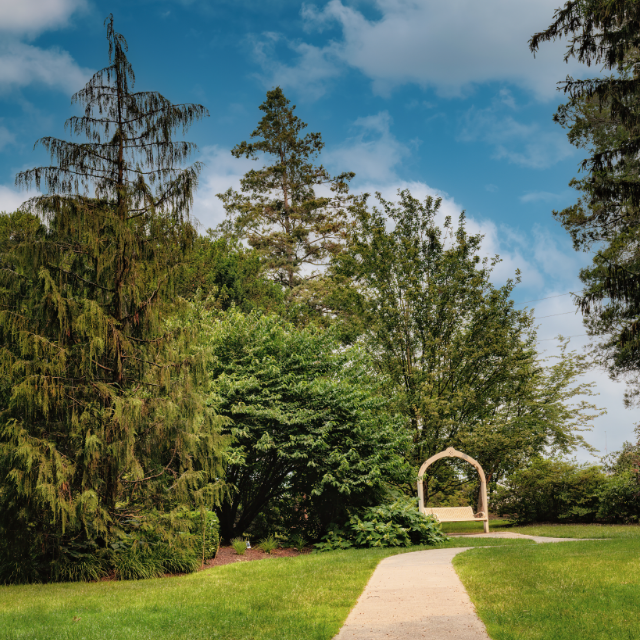VISIT SUNBURY
Service Electric Cablevision
3662 Point Township Drive, Northumberland, PA 17857
EVENTS
Check out the events happening in Sunbury!
CITY PARKING LOTS
To obtain a permit parking pass, visit the treasurer office at 225 Market Street.
Any questions call 570-286-4588.






SUNBURY'S HISTORY
Although Sunbury was officially established in 1772, settlement of this area began decades earlier. Our city has been the site of significant historical events. Below are a few key moments in Sunbury's vibrant history.
Site of Fort Augusta
Because of its strategic point along the Susquehanna, Sunbury became the site of one of the most important frontier forts in Pennsylvania, Fort Augusta. Ft. Augusta was a reliable stronghold during the days of the French and Indian War. It also played a major role in the Revolutionary War where it served as the military headquarters for the American Forces in the Upper Susquehanna Valley.
The gentle beauty of the Susquehanna River flows along the western edge of the city. The river has provided prosperity and recreation to the Sunbury area for many years. The village of Shamokin, with about ten Native American dwellings, were located along the water. This village became the site of Fort Augusta.
The Native Americans of the Six Nations met with Governor Morris on January 17, 1756 and urged him to take their village and build a fort there. Native Americans from the Upper Allegheny Region along with French troops were trying to claim this Territory for France. Raiding parties laid waste to many small communities such as Penn’s Creek where white settlers had been massacred in 1755. The Native Americans of Six Nations believed that a Fort at this site would protect them as well as the white settlers.
The Commandant of the fort was Colonel Sam Hunter. He lived at the fort and supervised the sending of troops to serve in Washington’s Army. Hunter also provided protection and support to smaller forts in the area. As the Revolutionary War progressed, the Iroquois became allies of the British and frequently invaded the area. In 1778 a massacre occurred in Wyoming that sent settlers fleeing to Fort Augusta seeking protection. Colonel Hartley restored order briefly but in 1779 Native American raids began again. An expedition against the Iroquois was planned and executed by General John Sullivan. The campaign stopped Britain’s Native American allies.
Fort Augusta eventually became the property of Colonel Hunter and his descendants lived there until 1848 when the log home burned. Fort Augusta became the property of its last commander, Colonel Hunter, and his descendants lived there until 1848 when the log home burned.
The present Hunter House was built by Captain Samuel Hunter, a grandson of Colonel Sam Hunter. The home at 1150 North Front Street in Sunbury is now home to the Northumberland County Historical Society and houses a museum with an excellent historical and genealogical library.
The First Electric Light
But it wasn’t until the Wizard of Menlo Park came to town, that Sunbury truly became a historic site. Sunbury became internationally famous when in 1883 Thomas Edison demonstrated his invention, the electric light, by wiring the city hotel. The hotel, which was the first building to use Edison’s three wire system, changed the world and was renamed “The Edison Hotel” to honor the inventor.
In July of 1883, the City Hotel became the first building ever to be wired for electricity. Thomas Edison wired the hotel using his three wire system. The hotel was renamed “The Edison Hotel” in his honor. The same day Edison wired the Railroad Station on Second Street. Sunbury had become an important railroad center and by 1910 the population was 13,770.
Our River's History
The Sunbury Flood Wall was proposed after the disastrous flood that occurred in March of 1936. The City and residents suffered over 4 million dollars in damage. Construction of the flood system began in May of 1946 by the War Department, later changed to the Department of the Army, and was completed in 1951 at a cost of 6.6 million dollars.
The existing flood control system protects 147 acres of the City of Sunbury is a combination of 2.4 miles of flood wall, 2.6 miles of levees and several pumps monitoring stations. This system has evolved and been improved over the course of 60 years to protect the City from flooding.
The largest component of the Sunbury protection flood protection system is the flood wall. There are two basic flood wall types, the T wall that averages 19’ tall and ‘I’ wall which average 12’ tall. Currently there are 6 openings in the current flood control system. These openings have been tested several times and have proven to be reliable against event floods.
The Flood Control system is a complex network of pump stations, drainage structures, interceptor storm drains, sluice gates, flap gates, levees, flood wall, closure structures and early warning systems that work together to provide protection from the raging waters of Shamokin Creek and the Susquehanna River. Specifically, the flood system is comprised of 2.4 miles of concrete flood wall, 2.6 miles of earthen levee, 6 pumping stations, 8 interceptor sewers, 11 drainage structures, 7 closure structures, 61 flap gates and 31 sluice gates
Since the 1800’s, the Susquehanna River has experienced a significant flood event on the average of once every 20 years. The Sunbury Flood Wall has protected Sunbury from over 15 high water events since it was completed in 1951. In 1972, flood waters from Hurricane Agnes crested at 35.8 feet at Sunbury, two feet higher than the crest in 1936. The wall held back the water and residents showed their gratitude in messages left on the wall.
The Adam T. Bower Dam is an extremely unique site in Sunbury. The dam is actually an inflatable fiber tube which stretches across the Susquehanna River. The dam is inflated in the spring to form a reservoir which is perfect for fishing and water sports, such as water skiing. The dam is lowered in the fall to allow fish migration and to keep the water’s level down when the spring thaws the snow.
Past Mayors of Sunbury
Mayor Walter E. Drumheller (two-terms)
Mayor Henry Heckart (one-term)
Mayor Morris R. Michaels (three-terms)
Mayor Joseph B. Nesbit (death in second term)
Mayor Fred E. Hoffman (1951-1955)
Mayor Allen M. Wolfe (1955-1958)
Mayor Lester P. Shissler (two-terms)
Mayor Samuel W. Haupt (one-term)
Mayor Donald R. Morgan (three-terms resign on fourth term)
Mayor William E. Gass (one-term)
Mayor Scott A. Heintzelman (two-months)
Mayor Charles E. Moll (one-term)
Mayor David L. Persing (six-terms)
Mayor Jesse C. Woodring (one-term)
Mayor Kurt M. Karlovich (one-term)
Mayor Joshua A. Brosious (Present)





